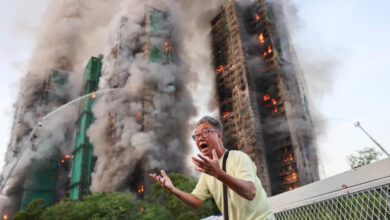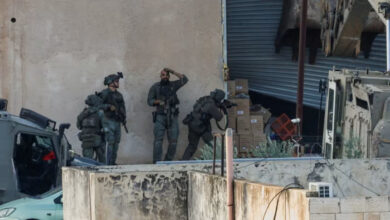It’s a growing expectation that with each disaster that strikes in Egypt, two separate crises will unfold: the first a direct result of the event’s devastation, and the other due to attempts to manage the aftermath.
Take the sinking of the Red Sea ferry el-Salam 98 in February 2006, which was carrying 1300 passengers. The first crisis emerged from the sinking itself, which claimed over 1000 lives. The second arose from the fact that the surviving victims of the tragedy floated in the Red Sea for a whole day before being returned to their families, who at that point had lost hope of seeing their loved ones again.
Likewise, in March 2007 a fire swept through the Qalaat el-Kabsh area of el-Sayeda Zeinab, leaving approximately 350 families homeless. That was the first, and obvious, crisis. Two months later, 150 of these families were still living in a state of homelessness, and after a year only 100 of them had been rehoused–the second crisis.
The list of similar bi-disasters goes on, from the rockslide in Duweiqa that left 100 dead and hundreds homeless, to one train derailing after another, to a handful of other maritime mishaps, along with, as in last week’s case, devastating flash floods.
Complaints have been consistent: poor compensation, delayed responses, inadequate or non-existent coordination, and, finally, simple neglect.
Last week, floods in Sinai and Aswan took 13 lives, and injured an additional 49 people, directly affecting 12,400, with hundreds left homeless. These are the latest figures to come from the National Committee for Crisis Management and Disaster Risk Reduction, which was established in April 2006 to improve coordination among different government departments involved in crisis management, as well as bolster the state’s disaster preparedness.
Over the past 18 months, the committee has proposed radically improving governmental responses to disasters. Commenting on whether he is satisfied with the level of crises management this time around, Mohamed Fawzy, head of the Information Decision Support Center, which houses the National Committee for Crisis Management and Disaster Risk Reduction, says, “I am satisfied to a certain extent."
“The effectiveness of any response to a disaster should be measured by taking into consideration the losses of lives,” says Fawzy. With just 13 deaths, and given the sheer and unexpected volume of the recent rains, such a criterion may suggest relative success.
Yet suggestions of success would probably leave a bitter taste in the mouths of Sinai’s el-Tor residents, who became victims of police tear-gas and rubber bullets last Wednesday when they protested the lack of government aid. One such protestor was quoted as saying, “What are we going to do with LE100 and a cheap blanket?
With respect to such stories, Fawzy warns against sensationalist media. Yet even the least sensationalist reports tell a tale that is less than successful. An aid convoy organized by the Hisham Mubarak Law Center heading to Sinai comprised of three trucks, carrying eight tons of food, covers and cloth, was delayed for two and a half hours at the Salam Bridge, with officers purportedly trying to reach state security for permission to allow the convoy to pass.
Likewise, another truck carrying aid collected by the Popular Campaign Support for Palestinian People in Damietta was stopped for seven hours en route, despite having previously notified authorities.
Are these examples of bad coordination? Fawzy says he has not heard of any such stories, and he says that without the preparedness plans that the his committee has tried to ensure each governorate has followed over the past 18 months, the losses would have been significantly higher.
In the case of floods, such plans included keeping flood canals clear of garbage and any obstacles at all times, with suction pumps ready to remove water pooling in residential areas. The reason for the failure to divert the floods appears to be based on the unexpected volume of the downpour.
“We expect such floods between October and December,” says Fawzy, “and this change in the time of year and volume suggests that we are now witnessing some of the first direct effects of climate change.”
One of the principle roles of the Fawzy’s committee is during the post-incident phase, where it becomes essential to document the event in order to derive lessons for the future. To this end, approximately four days before the onset of the floods in Sinai and Aswan, the National Meteorological Authority informed most governorates about the likelihood of floods. Yet, according to Fawzy, most governorates later claimed they were not alerted.
“This is one lesson learned,” says Fawzy. “We need to make sure that early warning systems are working efficiently and reaching the right people.”




